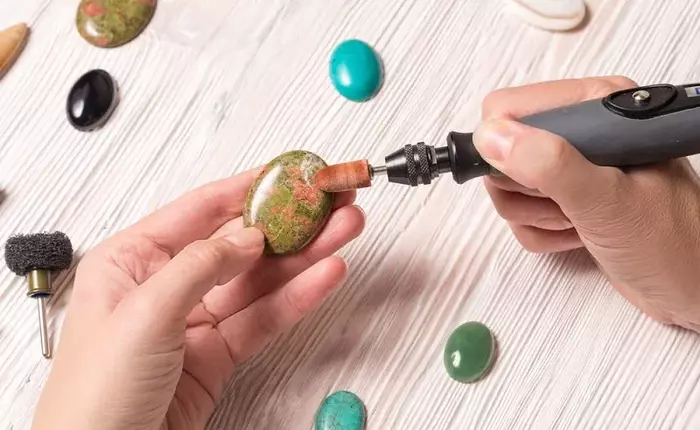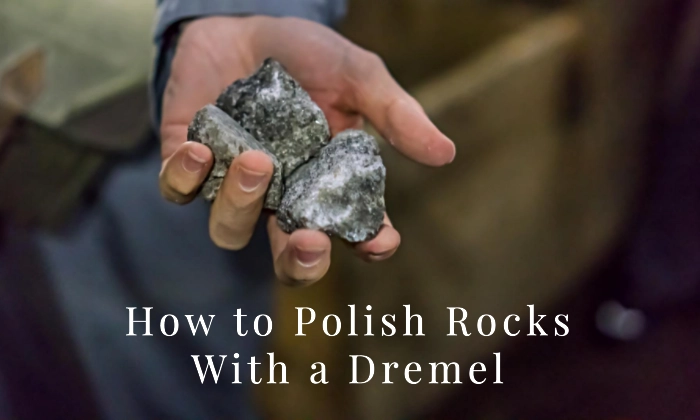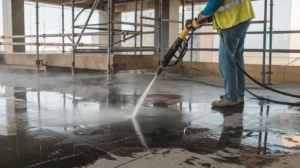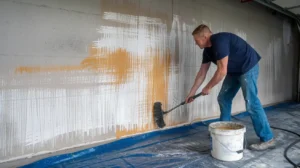How to polish rocks with a dremel: Polishing Rock with a Dremel is a fun and rewarding hobby that can turn rough, soft rock into a beautiful, shiny gem. While there are various methods for rock polishing, using a Dremel tool is one of the most effective and versatile techniques for beginners.
In this article, Stone Sealer & Restoration will show you how to use a Dremel tool to polish rock and provide tips and tricks for achieving great results. Whether new to rock polishing or looking to up your game, this guide will give you everything you need to know to get started.

Choosing the Right Dremel Tool and Accessories
Selecting the appropriate Dremel tool and accessories is crucial for achieving excellent results when polishing stones with a Dremel tool. When it comes to polishing stones, we highly recommend using a Dremel rotary tool – a handheld power tool known for its high-speed rotation capabilities.
When choosing the right Dremel tool for stone polishing, take into account factors such as the tool’s size, weight, chuck type, and speed range. Additionally, you’ll want to carefully select the correct accessories, including polishing bits, sanding discs, and abrasive materials, all tailored for stone like marble polishing and granite polishing, and compatible with your chosen Dremel tool.
Preparing Your Rock for Polishing
Before polishing your rock, you’ll need to prepare it properly. Start by selecting a stone that is hard enough to be polished and has a smooth surface. You’ll also need to thoroughly clean your rock, removing any dirt, debris, or oils that may interfere with polishing. To do this, use warm water, soap, and a soft-bristle brush to scrub the rock gently. Once your stone is clean, dry it completely before polishing.
Using Your Dremel to Polish Rock
To use your Dremel tool for rock polishing:
- Start by selecting the right polishing bit for your rock type.
- Attach the bit to your Dremel tool and set the speed to a medium setting.
- Apply the abrasive material to the polishing bit and gently touch it to the rock surface, moving it in a circular motion.
- Be careful not to use too much pressure or force the bit too quickly, as this can cause damage to the rock.
- Continue polishing until you achieve the desired level of shine.
Gathering Your Materials
Before you embark on your rock polishing journey, it’s essential to gather the necessary materials. You’ll need:
- A Dremel rotary tool with a flex shaft attachment
- Various Dremel polishing bits (grit levels: coarse, medium, and fine)
- Safety goggles and a dust mask
- A sturdy workbench with clamps
- A bowl of water
- Mild dish soap and a brush
- Polishing compounds (cerium oxide works well)
- Soft polishing cloth
Safety should always come first. Make sure to wear your safety goggles and a dust mask to protect your eyes and respiratory system from any debris generated during the polishing process.
The Polishing Process
Coarse Polishing
Begin with a coarse polishing bit to remove any prominent imperfections and rough edges. Keep the Dremel moving evenly across the surface to avoid creating divots.
Medium Polishing
Switch to a medium polishing bit once the rock’s surface is relatively smooth. This step refines the shape and prepares it for the final polish.
Fine Polishing
For that ultimate shine, use a fine polishing bit. This step brings out the rock’s natural beauty and luster. Keep the Dremel moving slowly and steadily for best results.
Finishing and Cleaning Your Polished Rock
After you’ve polished your rock, it’s time to finish and clean it. To do this:
- Remove any residue on the rock surface with a soft cloth or brush.
- Apply a polishing compound to a new polishing bit and use it to buff the rock surface, adding a final shine.
- Rinse the rock with clean water and dry it thoroughly.
Alternative Polishing Methods
While using a Dremel tool is an effective way to polish rock, you can also try other methods. For example, you can use a rock tumbler to polish stones, placing the rocks in a rotating drum with abrasive material and water. Alternatively, you can hand-polish rocks using sandpaper or other abrasive materials. Each method has pros and cons, so consider what works best.
Tips and Tricks for How To Polish Rocks with a Dremel
To get the best results when polishing rock with a Dremel tool, try these tips and tricks:
- Use the right speed and pressure when polishing
- Use a soft touch and let the tool do the work
- Change out your polishing bits regularly
- Use a polishing compound to add a final shine
- Experiment with different abrasive materials and techniques
- Take breaks to prevent overheating your tool
- If you encounter any issues while polishing, such as scratches or dull spots, try troubleshooting the problem before continuing.

Common Mistakes to Avoid
- Overworking your rock: Excessive polishing can lead to heat buildup, damaging your rock. Take breaks and let the rock cool if needed.
- Skipping grit levels: Each grit level serves a purpose. Skipping levels can result in an uneven finish.
Why Choose Us For Polishing Rock with a Dremel
If you want to get into rock polishing or take your skills to the next level, choosing the right guide is important. Here’s why you should choose us for polishing rock with a Dremel:
Expertise:
We’re passionate about rock polishing and have years of experience using Dremel tools. Our guide is based on tried and tested techniques we’ve honed.
Comprehensive:
Our guide covers everything you need to know to start rock polishing, including selecting the right Dremel tool and accessories, preparing your rock, polishing your stone, and finishing and cleaning your polished gem. We also provide tips and tricks for troubleshooting and experimenting with different techniques.
Clear and Concise:
Our guide is written in clear and concise language, making it easy for beginners to understand and follow. We’ve included step-by-step instructions and helpful visuals to ensure you get the best results possible.
Customer-Focused:
We’re committed to providing our customers with the best possible experience. If you have any questions or concerns about our guide, we’re always here to help.
Cost-Effective:
Rock polishing can be an expensive hobby, but using a Dremel tool is a cost-effective way to get started. Our affordable guide can help you achieve great results without breaking the bank.
In short, if you’re seeking a comprehensive, easy-to-follow guide for polishing concrete with a Dremel tool, look no further than us. We’re here to assist you in achieving remarkable results and making the most of your concrete polishing endeavors.
Conclusion
Polishing rock with a Dremel is a rewarding hobby that can result in beautiful polished stones for display or use in jewelry making and other projects. With the right tools and techniques, you can achieve stunning results that impress your friends and family.
Wear appropriate safety equipment when polishing rocks, including goggles and a dust mask. And feel free to contact us for doing experiment with different techniques and materials to achieve the results you’re looking for. Stone Sealer & Restoration has helped get you started on your rock polishing journey.
FAQs
Q: What is rock polishing?
A: Rock polishing is smoothing and shaping rough rocks and stones to create polished stones for display or use in jewelry making, decorative objects, or landscaping.
Q: What is a Dremel tool?
A: A Dremel tool is a handheld rotary tool that Dremel tool can use for various purposes, including rock polishing. It typically comes with multiple attachments and accessories that the Dremel tool can use to sand, grind, polish, and cut different materials.
Q: Can I use any Dremel tool for rock polishing?
A: Yes, you can use any Dremel tool for rock polishing if it has a variable speed setting and has appropriate attachments and accessories.
Q: What kind of rocks can be polished?
A: Most rocks and stones can be polished, including agate, jasper, quartz, and granite. However, some stones may be more difficult to polish than others due to their hardness, texture, or shape.
Q: Do I need any special equipment for rock polishing?
A: Besides a Dremel tool, you’ll need a range of attachments and accessories, such as grinding stones, sanding discs, and polishing pads. You’ll also need safety equipment, such as goggles and a dust mask, to protect yourself from dust and debris.





